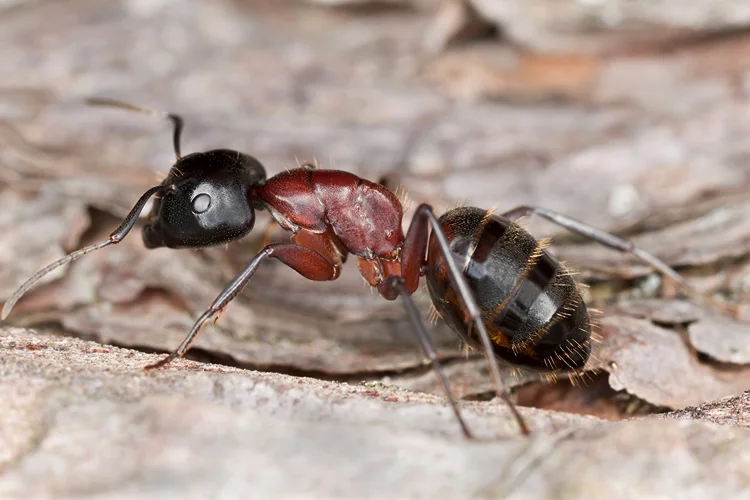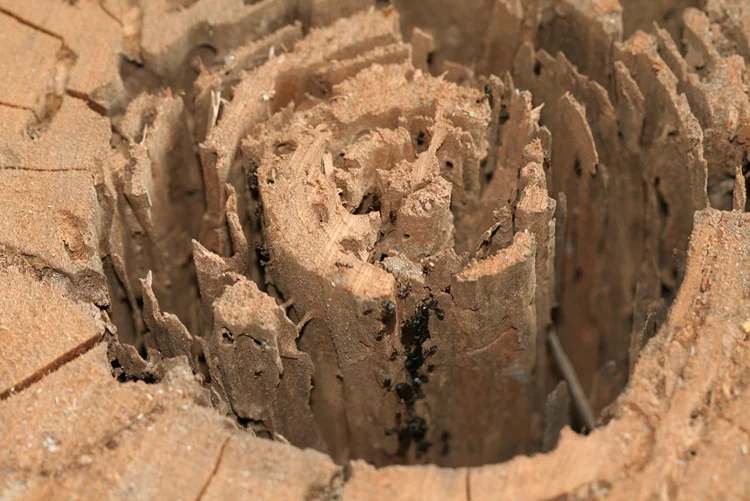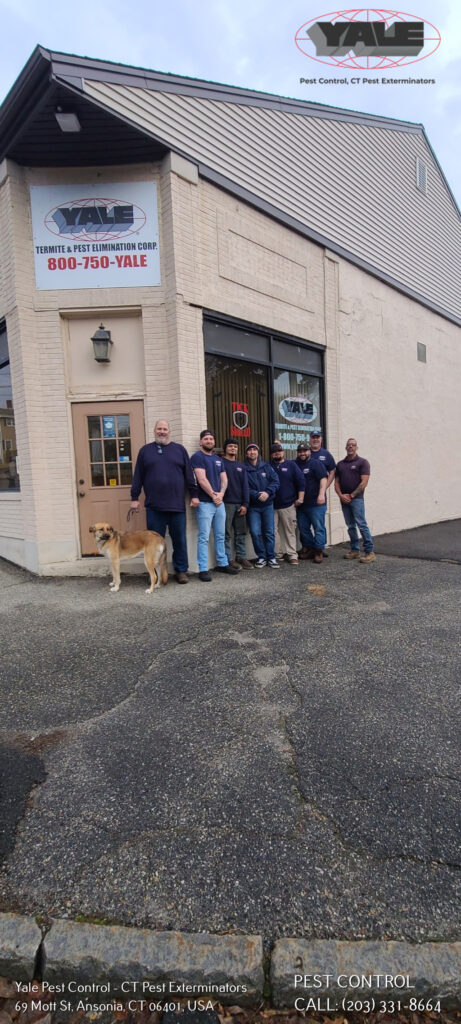
Carpenter ant problems are a huge concern for many homes in the country because these pests damage wood like drywood termites do. The structural damage they cause can result in thousands of dollars in repair, so it’s crucial to find these pests and get rid of them immediately.
So where do carpenter ants usually build nests and what’s the best way to eliminate them? A carpenter ant nest is usually found outdoors and in decaying wood near the house. It’s important to watch out for signs of their activity, like shed wings, damaged wood, frass, live ants, and noises inside walls to find the carpenter ant colony. To get rid of them, homeowners can replace rotting wood, set up ant baits, use natural repellents and insecticides, or call a pest company.
Ants are the number one nuisance pest in the country because of several reasons – they get everywhere, they’re difficult to eliminate, and they ruin the food in the pantry. But aside from these reasons, black carpenter ant species are especially alarming because of the structural damage they cause to wooden structures on a property.
Before the carpenter ant damage gets out of control, homeowners need to identify where the carpenter ant infestation is and eliminate them with the right extermination methods. The best way to do this is to know what carpenter ants look like, where to look for them, and what the signs of carpenter ant activity are.
This big black ant species got its name because of its unique nesting habit of attacking moist wood and building a nest there. When homeowners spot winged carpenter ants in their homes, they might assume that there’s a damp wood termite infestation on their property because it’s difficult to tell the two pests apart.
Carpenter ants can be identified through their narrow thorax (middle body segment) and angled antennas. They also measure around 1/2 to 5/8 inch. These ants are usually black, but they might also be red, brown, or a combination of all 3 colors.
Carpenters ants may build satellite nests anywhere inside and outside the property, like wall voids, insulation, stumps, rotten fences, firewood piles, and other places where there is plenty of damp wood. When you find a satellite nest in any of these places, it’s best to call a carpenter ant control company immediately to find other satellite nests and their parent colony.
It’s not easy to find the ant colony immediately, so the next best thing that owners can do is watch out for different signs of carpenter ant activity that lead them to the parent nest.

Carpenter ants are extremely destructive, so it’s crucial to find and exterminate them immediately before they cause irreparable damage. Here are some of the best ways to prevent carpenter ants from taking over the house:
Carpenter ants attack damp wood inside and outside the house to build their nests. Make sure to check the tree stump, wood pile, and other wooden structures outside the house for carpenter ant activity. Ensure that these structures don’t touch the ground so it’s difficult for carpenter ants to reach them.
If the carpenter ants already managed to damage the wood inside the house, replace it immediately before it affects the structural integrity of the building. It’s also a good way to get rid of one of the satellite nests around the house.
When removing wet and rotting wood around the house, make sure to address the moisture problem in those areas. This prevents the wood from decaying quickly and the carpenter ants from attacking.
Setting up carpenter ant bait works for minor infestations around the property. It’s one of the most effective and low-cost pest control techniques for carpenter ants because it kills multiple ants at a time using materials found at home.
Just mix boric acid or Borax with sweet food, like honey or sugar, to attract carpenter ants. The worker ants carry the boric acid-laced food back to their colony inside the damaged wood, where it’s consumed by other ants. Within a few days, homeowners may see piles of dead ants in areas near satellite colonies.
The key to creating successful bait stations is to find the best places to put them. The bait should end up on the ant trail between the nest and the food source. It’s also better to put more bait than too little to lure the ants out.
Some store-bought insecticides contain toxic chemicals that are harmful to people, pets, and the environment. Many homeowners prefer using natural repellents to get rid of the carpenter ants first before relying on pesticides or calling professional pest control companies. Here are some of the most commonly used natural ant repellents found at home:
Pyrethrin is a plant compound extracted from the Chrysanthemum plant that’s also used as an organic pesticide. Insecticides that contain pyrethrin release nerve toxins that are lethal to soft-bodied insects like ants. They also have very low toxicity to household pets and humans, so they can be safely used in homes as long as homeowners proceed with extreme caution.
But like most carpenter ant control techniques, it’s important to locate the nest first and drill holes in the damaged wood before spraying the pyrethrin-based insecticide. This ensures that most of the ants in the colony are killed. Repeated application of the pesticide every 2 weeks is also required in some situations.
Home remedies might work for a few ants, but a large-scale carpenter ant infestation requires treatments that can only be performed by professionals. They might use the same strategies that homeowners already tried before, but they do it with professional-grade sprays, powders, or pesticides that homeowners can’t simply buy from the local hardware store.
Ant exterminators have the right knowledge and equipment needed to get rid of carpenter ants and keep them away for a long time. Hiring their services doesn’t always come cheap, but opting for professional pest control actually helps homeowners save more money in the long run – since they don’t have to repeatedly purchase insecticides or other home remedies.

The appearance of a carpenter ant or odorous house ant doesn’t have to be a big concern for your home, as long as there are preventative measures in place. But if these pests start causing serious damage to your home, then you might need to hire professionals like Yale Pest Control to exterminate them immediately.
Yale Pest Control has been providing homes and businesses with various pest control services for several years now. We understand the habits of carpenter ants, allowing us to come up with the most effective control methods that won’t cause further harm to your home, family, and the environment. Call us today to book an appointment or get a quote from us.